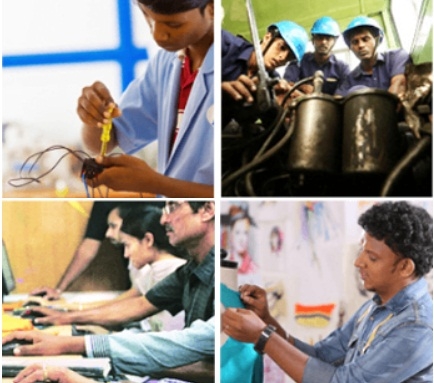The funds allocated for the Mahatma Gandhi National Rural Employment Guarantee Act, the biggest source of employment in rural areas, will also be increased this year…reports Santhosh Kumar Pathak
Union Finance Minister Nirmala Sitharaman is going to present the last full budget of the second term of the Narendra Modi government in Parliament on February 1.
As this will be the last full budget of the Modi government before the 2024 Lok Sabha elections, it is being said that the election glimpse will be apparent in the budget.
Former Congress president Rahul Gandhi and other opposition parties are expected to make the budget an issue in the elections.
Looking at the preparations and record of the government regarding the budget, it is being said that the Modi government can majorly increase the total amount allocated to welfare schemes.
The BJP government, which has been facing constant attacks from the opposition parties on the issue of unemployment, will be focusing on increasing employment opportunities in its upcoming budget.
More emphasis will be placed on increasing employment opportunities in urban and rural areas.
For this, along with basic infrastructure, a special announcement can be made for small and medium industries.
The funds allocated for the Mahatma Gandhi National Rural Employment Guarantee Act, the biggest source of employment in rural areas, will also be increased this year.
Along with farming, special announcements for agriculture and other areas related to it are expected.
The government will increase its expenditure to ensure that along with the increase in employment in rural areas, the income of the people also increases, which will boost the economy.
The government can make important announcements in the budget to provide relief to the people from inflation.
Giving great relief to the taxpayers, along with announcing a reduction in income tax rates, the government can make a big announcement on the GST front in this budget.
In view of the upcoming Lok Sabha elections, the government can give some relief to the middle class, employed income tax payers and government employees as well as small and medium businessmen.
It may be full of populist schemes and promises to woo voters.

A booster shot for growth
The Union Budget 2023 is just a few days away and theres much expectation from all and sundry that this election eve Budget will deliver a booster shot for growth.
More so as the world is staring at a recession, there’s a war going on for almost a year now between Russia and Ukraine, and the post pandemic world is seeing a reset in geopolitical equations with more inward looking policies.
Given the specialised nature of jobs now and greater use of technology tools including Artificial Intelligence (AI), Machine Learning (ML) across industries, it is important to have a highly skilled workforce.
Dr Yaj Medury, Vice Chancellor, Mahindra University says: “The value of developing cognitive thinking, problem-solving and management capabilities can hardly be overemphasised. The Union Budget 2023-24 needs to ensure that education is given the requisite budgetary support to power innovation and bridge the talent-skill gap in India.”
On talent, a special focus needs to be on women, given their distinct economic role and the need to reduce the gender-gap in our workforce.
Neha Bagaria, Founder & CEO, JobsForHer says: “The government should focus on broadening the domestic economy and creating new employment opportunities with a special focus on building the female economy.” She suggests that the government should also consider offering tax sops to organisations that hire more women and should come up with strategies to rationalise equal pay for men and women.”
While skill development needs a lot of attention, climate change is not far behind. Industry is looking up to the Union Budget on steps to fight the climate crisis.
Prateek Kanakia, PhD, Chairman and Founder, TheGreenBillions Limited says: “We must fight climate change with clean energy and we expect to see more actions in the Budget around climate financing and mobilising more resources by increasing allocation in the Production Linked Incentive (PLI) scheme for boosting domestic manufacturing of green and sustainable solutions.”
Clean energy is a key today and expanding use of Natural Gas via City Gas Distribution (CGD) will contribute to the efforts.
Sandeep Trehan, President, Marketing & Business Development at THINK Gas, says: “The success of natural gas expansion across geographies depends on the ability of CGD companies to create new customer experiences. It is important that success stories around the use of natural gas and reduction of emissions are shared with everybody. Natural Gas is an opportunity that will bring change in the mindsets of the customer who opt for clean and green fuel.”
Another key area is mapping. More so in the digital age, maps are the means not only for quicker e-commerce deliveries, navigating roads, but also in agriculture, defence, aerospace and more.
Says Agendra Kumar, MD, Esri India: “The government announced a forward-looking National Geospatial Policy in December 2022 with an objective to make India a leader in the geospatial space. Various government bodies have been identified in the policy for data creation and management. Along with strengthening the Geospatial Infrastructure, the policy also talks about the creation of a National Digital Twin. These initiatives will materialize only through appropriate funding, and this is the expectation from the Union Budget 2023.”
All eyes and ears now on Union Finance Minister Nirmala Sitharaman who will present the Union Budget 2023-24 on 1st February.

